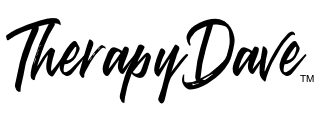Therapists have long been concerned with helping families develop healthy ways of caring and relating to one another. After all, it’s important that we care for others and are connected to them for healthy growth. However, there are certain types of “caring” that can interfere with healthy growth patterns for all members of the family.
Enmeshment in families means that there are ways of relating that are too close for healthy personal independent growth. Individuals living in such families are “meshed” too close together as “one unit”. It is a symbiotic relationship where one feels they can’t survive or function without the other person. The relationship itself acts as if it is one person. This effectively stops anyone from learning how to function as an independently functional human being.
In an enmeshed family, separate individual identity is not allowed. As each person grows up, no one is allowed to “practice” relying on themselves. They aren’t allowed to learn how to be by themselves, or to develop their own personal resources, skills, and abilities over time.
These unhealthy family patterns also attempt to control all aspects of each family member’s behaviors, thinking, and responses. Enmeshed families manage everything… for the other person’s “own good.” In fact, there is a desire to not only help, but to “over-help.” It is as if there is no identity outside of being needed or taking care of “others”.
Symbiosis as Control
Symbiosis is when two organisms live off each other and cannot function separately. For example, in biology, one part of a plant gets the moisture and the other the nutrition. If you separate these two parts, the plant will die.
This works well for plants, but not for human beings who need to grow more independent and separate over time. In a dysfunctional human symbiosis, there is a fear that one cannot survive alone without being a part of the larger unit. As a result, the self identity in enmeshed families comes only from others, not the self.
The Death of Individuality
In a healthy family, each person chooses their own family role. They are even encouraged to change roles if this is helpful or useful for personal development. Each person is recognized as having separate developmental stages that they need to handle by themselves, with decreasing parental structure and guidance.
This does not happen in unhealthy, enmeshed families. In enmeshed families, the family defines the role for each person. There are few individual, independent, and separate boundaries; everyone is involved in everyone’s feelings, needs and life. The enmeshed family dictates how each person should relate to the outside world. It does not even allow its family members to wrestle with learning from their mistakes.
How to Recognize Enmeshment
When someone feel that they will die if they have no one to care for, then they are struggling with co-dependent, enmeshed patterns with no “boundaries.” You should proceed very carefully with such individuals, as your goals for closeness will not mirror their own. In essence, you may not be playing a game, but they are (and cannot help it). The game is a surprisingly simple one: You can’t heal what you can’t feel.
Creating Healthy Boundaries
The extreme opposite of enmeshment is to be overly separate and not connected to anyone. That’s not healthy either as it creates many psychological walls that keep other people at a distance. What is needed is a balance: Flexible, intact boundaries and limits where values, beliefs and rules are established, but each person is allowed to explore and discover their own individual identity.
We need to allow each individual to get in touch with their own feelings and needs. To experience life, to risk, fall down, pick themselves up again, to feel alone, fearful, scared, and so on, as they develop themselves in the world. Otherwise, there is no growth.
